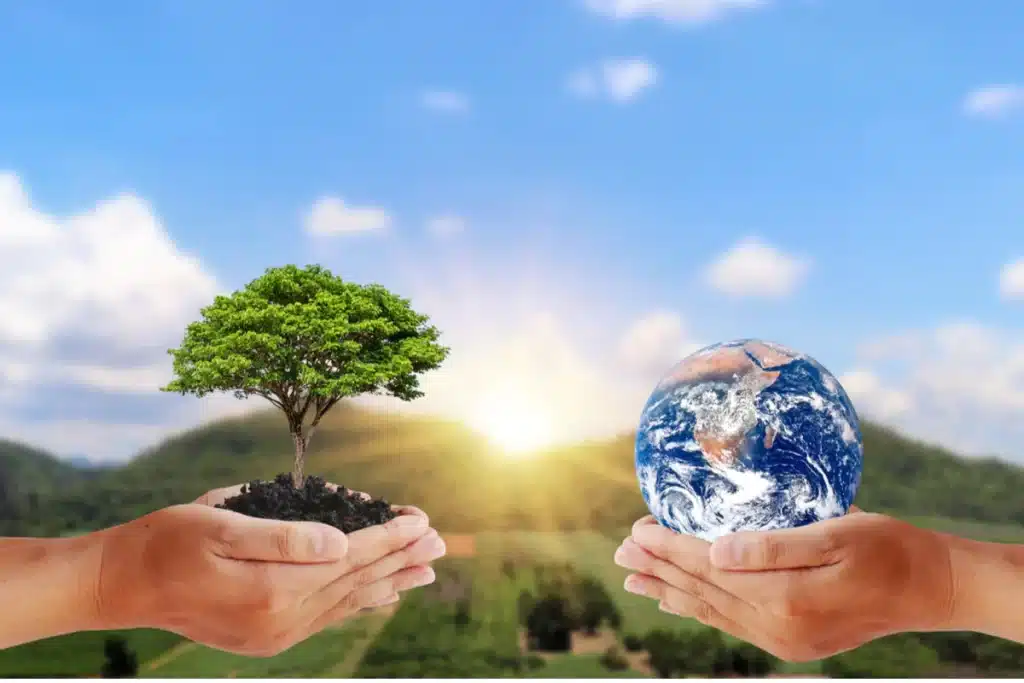El Día Mundial del Medio Ambiente es el día de las Naciones Unidas (ONU) dedicado a la concienciación medioambiental y a la protección de nuestro planeta. Este día es una oportunidad para cambiar nuestros hábitos y tomar medidas para ayudar a la Madre Tierra. Según un informe de la ONU,hay cerca de un millón de especies vegetales y animales en peligro de extinción. En honor al Día Mundial del Medio Ambiente, la Conferencia anual sobre el Medio Ambiente abordará este y otros temas.
Let’s discuss when World Environmental Day is and why it is so important to invest in our environment to invest in our future.

¿Cuándo es el Día Mundial del Medio Ambiente?
World Environment Day is celebrated every June 5th. This year, World Environment Day is on Saturday, June 5th, 2021. Every year there is an environmental theme assigned to the holiday and there is a conference to address current sustainability issues. This year’s theme is ecosystem restoration.
Conferencia Mundial del Medio Ambiente 2021
Each year on June 5th, a different country hosts World Environment Day to promote worldwide environmental awareness. This year Pakistan will host for the first time, in partnership with the UN Environment Programme (UNEP). As part of the “ecosystem restoration” theme for 2021, the conference will formally launch the UN Decade on Ecosystem Restoration 2021-2030, an initiative to prevent, halt, and reverse the degradation of ecosystems across the globe.
“In 2021, we must take deliberate steps to move from crisis to healing,” says Inger Andersen, Executive Director of UNEP. The upcoming conference is expected to address healing steps such as reviving natural carbon sinks and closing the climate emissions gap by 25% by 2030.
¿Qué es la restauración de ecosistemas?
La restauración de ecosistemas consiste en ayudar a la recuperación de ecosistemas degradados o destruidos y devolverles la vida mediante la plantación de árboles, la limpieza de zonas naturales contaminadas o la concesión de espacios naturales para que se recuperen por sí mismos. El objetivo es revertir la degradación de sistemas como lagos, océanos, humedales y bosques.
Los ecosistemas sustentan y conforman la vida en nuestro planeta. La degradación de los ecosistemas contribuye a la pobreza, al cambio climático y a la extinción masiva de especies. Restaurar ecosistemas valiosos tendría beneficios financieros, sociales y medioambientales. Ayudaría a nuestro planeta a sanar y a reducir el cambio climático. Pero la restauración sólo es posible con un apoyo público significativo y con una acción gubernamental que financie y promueva las iniciativas de restauración.
¿Qué puedes hacer para ayudar a restaurar los ecosistemas naturales?
There are many current organizations trying to address degraded ecosystems. To support the restoration efforts you can volunteer or donate to ecological projects. Two great examples of successful projects are the Prime Hook National Wildlife Refuge in Delaware, one of the largest active wetland restoration projects in the world, and Pakistan’s Billion Tree Tsunami, which has now planted over a billion trees. For the next steps, that project has now encouraged the government to plant 10 additional billion trees over five years.
Forest restoration projects directly help fight climate change by absorbing carbon dioxide from the atmosphere and providing resources and jobs to nearby communities. When making charitable donations, consider donating to ecosystem restoration projects such as the ones mentioned above. You can also volunteer for local projects and help restore local species.
Brightera y Freedom Forever te desean un feliz Día Mundial del Medio Ambiente
Brightera and Freedom Forever is passionate about the environment and restoring our planet’s ecosystems. Our teams are hard at work providing renewable energy that directly contributes to the reduction of greenhouse gas emissions and promotes sustainable practices.
